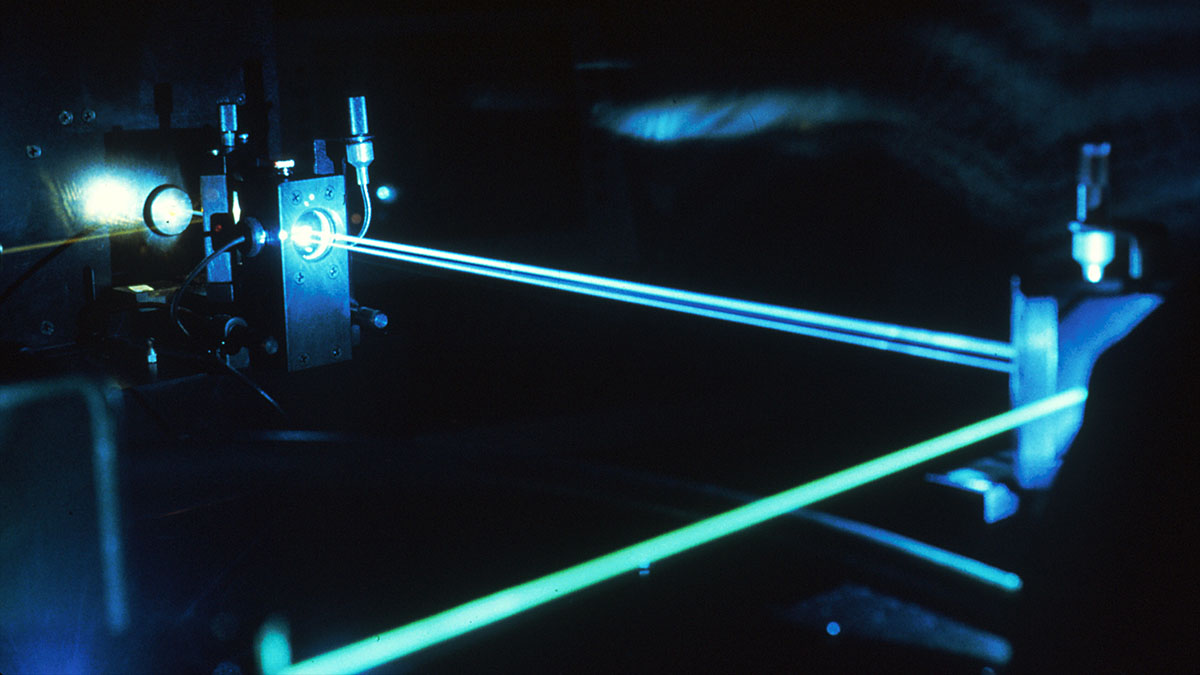when lasers learn how to turn a corner…

Most of us learned about lasers from science fiction. We know that lasers come in red if you’re the bad guy, and green or blue if you’re the good guy. We know that they travel at the speed of sound between two space fighters, and they make a phew-phew sound when fired. And they all travel in perfect straight lines. Of course real lasers are very different. They come in all colors, depending on how they’re powered and fired, they’re silent, some are invisible until they reach the kind of energy levels used in fusion reactor prototypes when fired at a real world target, and they travel to their targets so quickly, they seem to flash into existence and disappear in an instant. Oh and they don’t always travel in a straight line. In fact, as noted elsewhere on the web by a scientist and science blogger, they can bend it like Schrodinger if they emit an Airy beam, curving slightly after passing through a filter that changes their quantum waveforms. Previously, this feat has only been accomplished with photons, but now, it’s been done with electrons.
Airy beams — named after a British astronomer who tried to solve Schrodinger’s equation in the field of optics — have a couple of very interesting properties. Not only do they curve, but they’re not as prone to diffraction as our run of the mill laser beams and they can heal themselves after hitting an obstacle that should severely diffuse them, reassembling to continue their curved path after passing through it. It’s even more impressive that electron Airy lasers behave just like their photon counterparts because that allows for significant improvements in electron microscopes, precision sensors, and possibly even alternative computer chip designs that can better control the flow of electrons through themselves. How do you get electrons to do such bizarre things? A specially designed hologram projected in front of an electron gun changes their quantum state and sends them on whatever trajectory you need them to follow. Pretty much anything that uses the flow of electrons to do something very precise in tight quarters can benefit from the ability to attach a sort of steering wheel to particles that would otherwise travel in straight lines.
Now it’s important to keep in mind that curving is not what makes this an Airy laser, it’s the ability to change the quantum states of the photons and electrons being fired, and being able to scale up such lasers could be huge not just in the lab or in specialized applications, but even for very common, everyday things like high speed wi-fi access, secure transmissions, and major gains in energy efficiency for a whole slew of electronic device we use on a regular basis. With so much talk about how much money is being “wasted” on basic research like this, it’s amazing how little attention has been paid for the possibilities Airy lasers can offer if we could integrate their key principles into today’s devices. After all, experiments like this one are the very definition of basic research. The science says something should be possible, let’s try it and see what happens. In this case, Israeli scientists showed that Airy lasers can indeed do some pretty cool things…
See: Voloch-Bloch, N., et al. (2013). Generation of electron Airy beams Nature, 494 (7437), 331–335 DOI: 10.1038/nature11840





